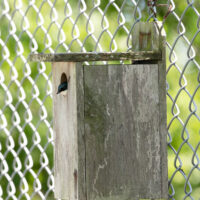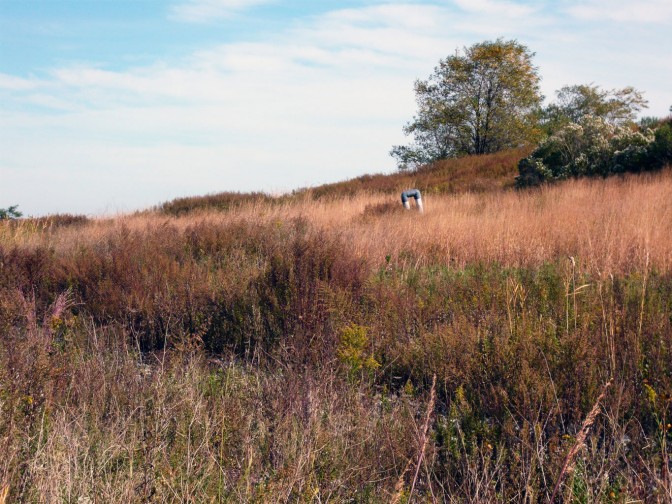Tags: Birds of Freshkills
Nest Box Tips from Freshkills Park

Highlights:
- There are some important general features of nest boxes to benefit birds
- Nest boxes are generally designed with a particular species in mind,
- Location is important when deciding which species you wish to attract
- Remember to report your sighting to Project NestWatch
Within the next few weeks, migrating birds will be returning to our area for the spring and summer.
...MOREWinter Birding at Freshkills

The trees are bare and snow flurries have started, signs that the heart of winter is approaching. As we brace for frigid temperatures and layers upon layers of clothes, it is hard to imagine this weather could be favorable for wildlife.
...MORERaptors of Freshkills Park

Highlights:
- Freshkills Park is home to a number of raptors throughout the year
- New York State threatened and endangered species such as Northern Harriers, Short-eared Owls, and Bald Eagles are found regularly at Freshkills Park
Raptors are birds of prey, made up of hawks, owls, vultures, eagles, Osprey, falcons, kites and Caracaras.
...MORESedge Wren Return to Nest at Freshkills Park

For a second year in a row, Sedge Wren (Cistothorus platensis), have returned to nest Freshkills Park.
Last summer, on August 6, 2020 a singing Sedge Wren was found on East Mound during our bird banding operations. Over the next few days it was joined by three additional singing males, all in close proximity to each other.
...MOREIt’s Fledgling Season for the Osprey at Freshkills Park

Highlights
- Osprey populations have rebounded since the 1970s when DDT and other agricultural pesticides were attributed to nest failure
- Ospreys build large nests, and pairs of Osprey will return to the same nests year after year
- At Freshkills Park we had seven successful nests in 2021, with 13 young about to fledge as of July 29th!
Cliff Swallows Confirmed Nesting on Staten Island for the First Time Since 1880, at Freshkills Park

Highlights:
- Seven Cliff Swallow nests were found at Freshkills Park in 2020, confirming that this species has at least recently attempted to breed there, the first on Staten Island since 1880
- In June 2021, two active Cliff Swallow nests were found at Freshkills Park
- Cliff Swallows are currently re-establishing themselves in the New York City area, and are now breeding in four out of five boroughs (excluding Manhattan)
Cliff Swallows (Petrochelidon pyrrhonota) are gregarious, fast moving birds that—with keen eyes and a stroke of luck—can be seen picking insects out of the air.
...MOREBackyard Bird Count

Birdwatching has become a new hobby for many. Not only is watching and identifying birds hugely fun but its also safe to do during the pandemic because it takes place outdoors.
Did you know that recording the birds you see and keeping a checklist can contribute to the scientific community?
...MORE2020 Christmas Bird Count

The National Audubon Society’s Christmas Bird Count (CBC) represents perhaps one of the largest and most comprehensive animal censuses on the planet. The power of this incredible survey is attributed to the tens of thousands of volunteers that participate every year.
...MOREIt’s Weird Duck Time: Meet the Freshkills Quack-pack

As the colorful warblers, flycatchers, and tanagers move south to escape the blustery winters of the northeast, the first few weeks of fall bring a rush of cool air and changing leaves. However, this change of season also brings in some very unusual waterfowl to our area.
...MORERare Sedge Wrens Nest in New York City for the First Time since 1960 at Freshkills Park

Grassland birds have rapidly declined throughout North America, and have experienced some of the steepest population declines of any group of birds in the United States. Since its transformation into an urban greenspace, Freshkills Park has become the home of many important species of grassland birds, including Grasshopper Sparrows, Bobolinks, and Eastern Meadowlarks.
...MORESparrow Travelers of Freshkills Park

Did you know that there are over 35 species of sparrows throughout North America? About a third of the species are fairly common throughout the continent. The most common and easily recognized sparrow is the House Sparrow. They are native to Eurasia and northern Africa and were introduced into Central Park in 1850.
...MOREFourth Year of Bird Banding Reveals New Species

Monitoring Avian Productivity and Survivorship
This summer, researchers from College of Staten Island completed their fourth year of Monitoring Avian Productivity and Survivorship (MAPS) bird banding at Freshkills Park. MAPS is a collaborative, continent-wide research effort coordinated by the Institute for Bird Populations, with over 1,200 participant banding stations.
...MORESoil Moisture Research Provides Insight into Grassland Bird Preferences

This summer, Freshkills staff and interns conducted fieldwork to assess the levels of moisture in the grassland soil on North and East Mounds. This research is part of an ongoing project to characterize the differences between the grasslands within Freshkills Park.
...MORE



